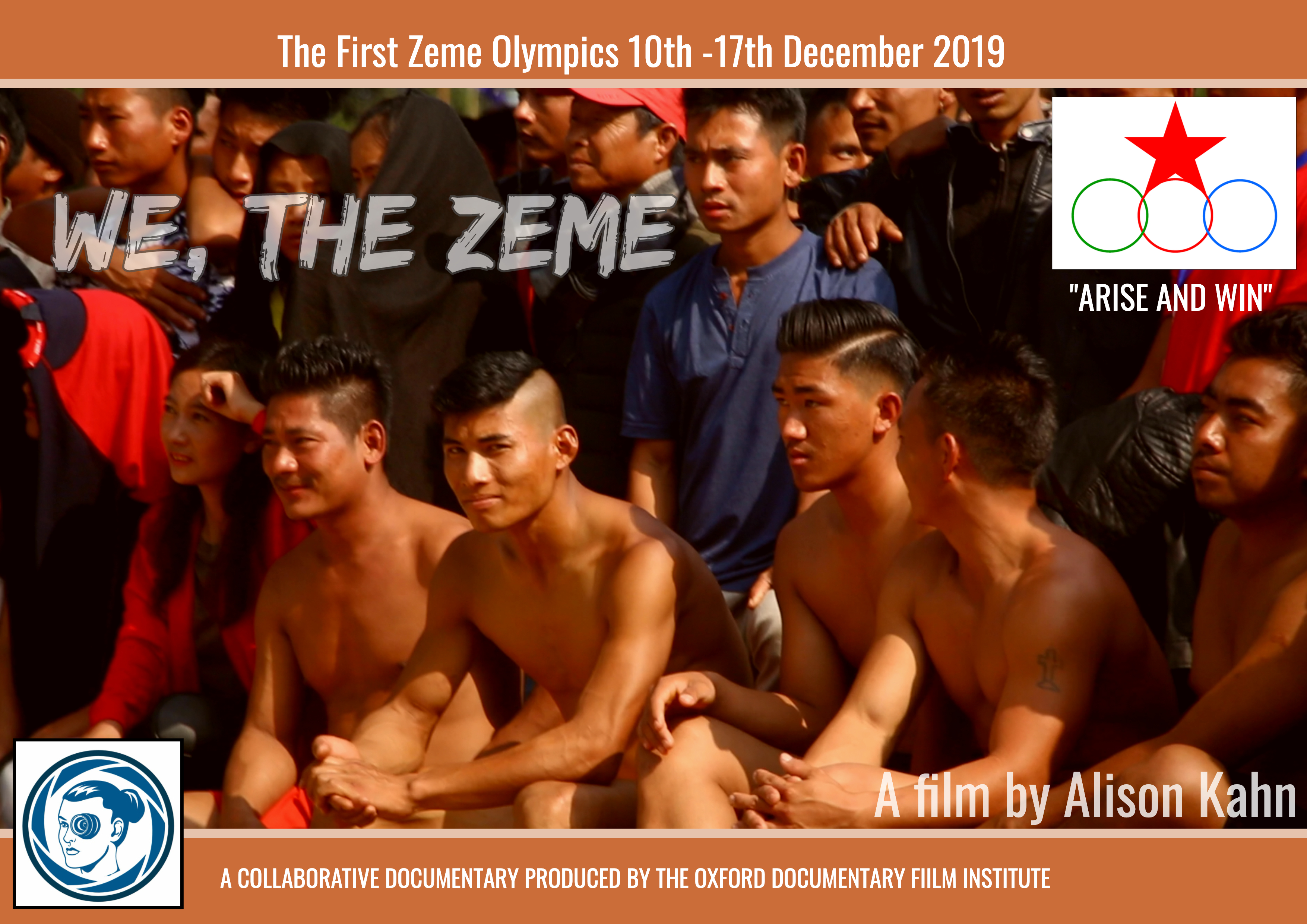
We, the Zeme was released onto the Global Film Festival Circuit in February 2021. It has of this date, August 16, 2021 been selected for screening at 8 International Film Festivals, has won 4 categories of Documentary Film Festivals and has won a Special Jury Award.
We, the Zeme
A Documentary Film about the First Zeme Olympics
Nagaland, India
10 – 17 December 2019
The Oxford Documentary Film Institute was invited to Nagaland in India to cover the First Zeme Olympics, which was held between the 10th and the 17th December 2019. Alison Kahn led the team, which was made up of students and young amateur filmmakers from different parts of India, including Kerala, Tamil Nadu, Assam, Manipur and Nagaland, as well as California, USA and Oxford, UK. None of them had ever made a documentary before. They met together for the first time in Nagaland, a day before the event. During the seven days, these young filmmakers attempted to capture the atmosphere the event, how it came about, show the audience who the Zeme Naga tribe are, and why the first Zeme Olympics was so important to them.
When I was asked by Jeremiah Pame, the President of the First Zeme Naga Olympics to make a film about the 7-day event, I knew it would be a wonderful opportunity and a logistical nightmare. This film was made as an attempt to fully integrate the Zeme Naga community into the making of a film about an extraordinary event they organised. I met with 7 young Naga amateur filmmakers for the first time in Nagaland the day before the event. My team from the UK consisted of an American student and my husband and our 2 young boys (aged 6 and 9). I was joined by 3 other Indian friends who brought film equipment from Chennai and helped with technical support. None of my team or Naga apprentices had ever made a documentary before. The travel and equipment expenses were all covered by our company, the Oxford Documentary Film Institute, and was the first film we had made in this way. As an anthropologist, I felt that the most important thing about the film was that it should be filmed by the Zeme themselves and echo their view of the event: that they should capture the atmosphere of and voices of people they wanted to record. We did not have time to follow any participant’s personal story as we did not know anyone beforehand and noone knew about interview techniques before we arrived. I just knew Jeremiah, who had spearheaded the endeavour and I decided to use him as our narrative thread through the film. Every day I set the teams off with directions about what we needed for the film- since the Nagas spoke the local language they could also help translate the material afterwards. Every evening we collected the material, and watched it, giving advice and instructions for the following day. When I got back to Oxford, I watched around 50 hours of footage again and assembled an edit. This edit went through several stages; asking questions to the Naga communities direstly on the Zeme Olympic Committee Facebook group (of which there are about 8,000 members). We screened an edit in April 2021 and acted on feedback. In my view, this is the first truly collaborative documentary film, made with the Zeme voice, at all stages of production: the pre-production, production and post production. I hope that it will set a standard for collaborative filmmaking practice, and I am truly grateful to all the Zeme collaborators who helped in its co-creation- it holds golden memoroies for everyone involved.
















The MUSEUM of the INVISIBLE project is a series of digital media artifacts that are being produced to connect indigenous voices to museum artifacts. Exhibit 1: The Secret Anthropology Museum is a short film that exposes the colonial gaze on indigenous women.
See Ohttps://www.ovada.org.uk/photo-oxford-virtual-exhibition/vada

